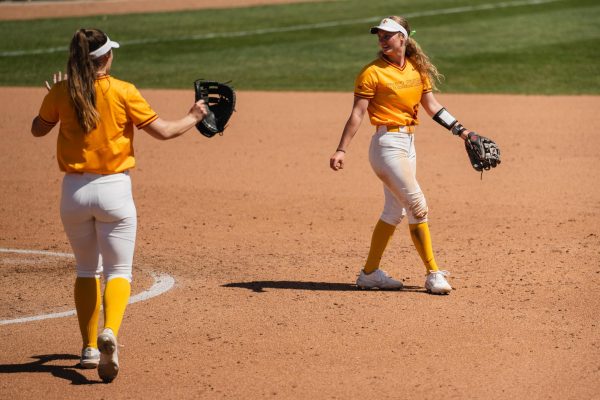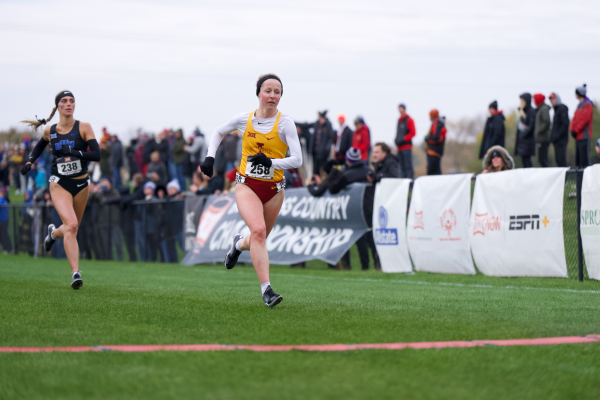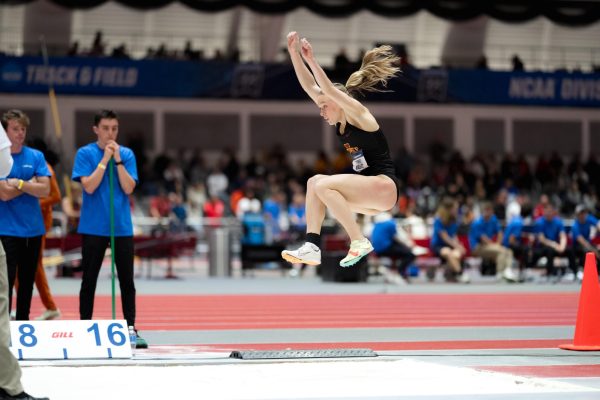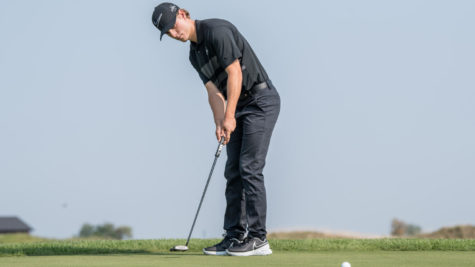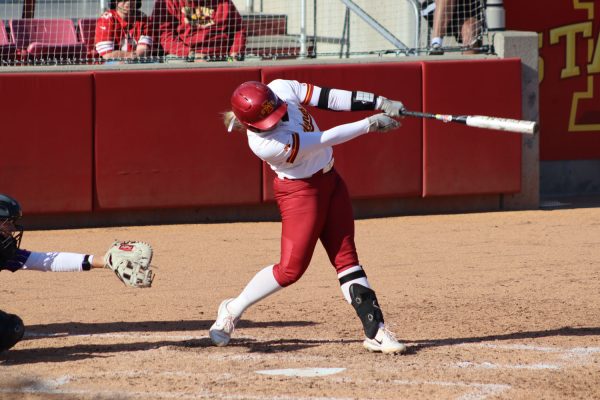SWIMMING: Tien Tran: Junior diver transfers skills from gymnastics
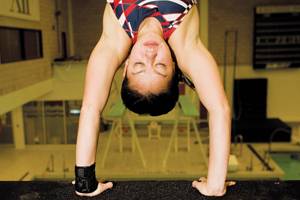
Tien Tran Wednesday Nov. 5, 2008 Photo: Jon Lemons/Iowa State Daily
November 11, 2008
A gymnastics background provides a good basis for divers, but can also be troublesome when it comes to fine-tuning the techniques of diving.
Iowa State diver Tien Tran was a gymnast for eight years prior to focusing on diving. Tran took a break with the intention of returning after many of her gymnastics coaches quit.
“I enjoyed the break too long,” Tran said. “Gymnastics is hard to go back to.”
Since Tran felt it might be too late to return to gymnastics, she decided to take up diving.
“Gymnastics and diving share a lot of the same basic movements,” Tran said.
The overall flipping and twisting movements in the floor exercise and tumbling passes on the beam have given Tran an advantage in positioning her body and her flexibility as a diver.
Tran said she is best at back dives.
“I do everything in a pike position that is also used in gymnastics,” said Tran. “Pikes’ only contrast between sports is that in diving the head stays tucked in and in gymnastics the opposite [is true], so the gymnast can find the ground with their eyes.”
Arm stands on platform are another dive form gymnasts learn with ease. “We did hundreds of thousands of hand stands in gymnastics,” Tran said. “I came in with that as a background and that really helped.”
Tran recounts that divers who don’t have the same background have had a hard time learning to do handstands as well as holding them.
Even though the basic movement between sports are similar, it’s the small technicalities that prove difficult from gymnasts-turn-divers.
“Twisters and reverse twisters are originally tough dives,” Tran said. “Relearning how to perform a twist like a diver adds to the difficulty.”
Technically, a gymnast would twist by placing both hands on the shoulder of the direction they wished to turn.
Contrastingly, in diving, one hand is placed behind the head.
“I twist left so I put my left hand behind my head and my right hand on my shoulder,” Tran said.
A gymnastic twist in a dive does not prevent the athlete from completing the dive with a proper entrance into the water, but is looked down upon by judges and will result in a score deduction.
“A lot of people still twist with both hands on the shoulder,” Tran said. “It was, for me, one of the hardest changes to make.”
Tran said it takes time getting used to the differences, and after six years of diving she feels she hasn’t mastered the twister or reverse twister. “It is definitely something you have to be persistent about,” Tran said.
Diving was initially just something to do for Tran, but as she furthers herself in the program at Iowa State, she feels that diving is a part of her identity now.








